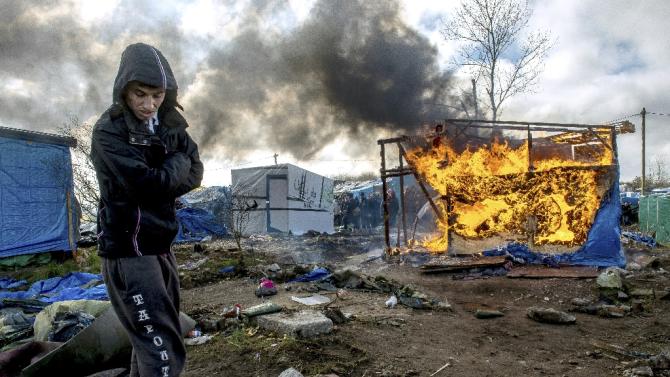Brussels (AFP) - EU President Donald Tusk sent a stark message Thursday to would-be economic migrants not to come to Europe as the bloc seeks to get a grip on the crisis.
Here are some of the key figures on the migrant situation in Europe since the beginning of the year:
- Influx continues -
Between January 1 and February 29, 2016, 131,724 migrants and refugees crossed the Mediterranean Sea, of whom 122,637 arrived in EU member Greece, according to the United Nations High Commissioner for Refugees (UNHCR).
The figure is comparable to the total registered in the first half of 2015, when 147,209 arrived on Europe's shores.
In 2015 more than a million migrants entered Europe, with Germany taking in the vast majority.
For its part the International Organization for Migration (IOM) said 120,065 people arrived by sea from January 1 to 24 February, 2016.
According to the IOM's figures, Greece took in 111,099 migrants and refugees. In the month of January alone, out of 67,415 migrants who arrived in Greece, 44 percent were men, 22 percent women and 34 percent children, it said.
In Italy, 8,966 migrants arrived by sea since the beginning of the year, one thousand more than the same period in 2015.
On February 24, 98,752 migrants had been registered in Croatia, 95,744 in Slovenia, 2,476 in Hungary and 821 in Bulgaria, according to the authorities in the EU states concerned.
Non-EU member Macedonia says it has registered 87,036, while Serbia has tallied 87,704.
- Hundreds dead -
According to the IOM, from January 1 to February 24, 2016, at least 418 migrants and refugees lost their lives trying to cross the Mediterranean.
According to the UNHCR, 410 people have died since the beginning of the year.
The route in the eastern Mediterranean linking Turkey and Greece continued to be the most dangerous, with a toll of 321 dead. Some 428 migrants had died in the first two months of 2015, the IOM noted.
In 2015, 3,770 migrants lost their lives trying to reach Europe, according to the IOM.
- Countries of origin -
The migrants and refugees mainly come from Syria, where the civil war which started in March 2011 has left more than 270,000 dead and made more than 4.7 million people flee the country.
Non-EU member Turkey is today the main country of asylum for Syrian refugees, hosting between two million and 2.5 million Syrians. Lebanon has taken in 1.2 million Syrian refugees.
According to the IOM, citing Greek coast guards, between February 1 and 21, 48 percent of the migrants who arrived in Greece came from Syria, while 25 percent came from Afghanistan and 17 percent from Iraq.
According to an IOM official, a rise in arrivals in Italy since the beginning of 2016 can be explained by a growing number of migrants from sub-Saharan Africa, in particular from Nigeria, Gambia and Mali.
The number of migrants from Morocco has also been on the rise, with 483 arriving in January 2016 against 93 in January 2015.
- Migrants blocked at borders -
The crisis is particularly acute at the Greek border crossing of Idomeni where more than 10,000 are stuck after Balkan states including neighbouring Macedonia imposed tighter controls.
Since the beginning of the year restrictive measures taken against refugees have spiralled in Europe, whether it be in the Balkan transit countries for migrants, or in the mainly northern European countries where they want to settle.
After Austria, the first country to have imposed quotas, Croatia and Slovenia -- both EU members -- as well as Macedonia and Serbia have all decided to limit the number of migrants allowed to enter their territory.
In the northern French port of Calais, hundreds of migrants who want to reach Britain languish in a sprawling makeshift camp where between 3,700 and 7,000 mainly Syrian, Afghan and Sudanese migrants are crammed.
- Quotas -
Despite opposition from several EU member states, in particular Hungary and Slovakia, the EU in late 2015 adopted a quota system under which 160,000 refugees who have landed in Italy and Greece would be shared out.
Only some 600 people have so far been relocated under the legally-binding plan.
- EU aid -
On Wednesday the EU proposed a humanitarian aid budget of 700 million euros to help frontline member states face up to the massive influx.
The move came after Athens submitted an emergency plan to the EU to help cope with in 100,000 refugees, estimating it needs 480 million euros to cope.
An EU-Turkey summit on the crisis is scheduled for March 7 in Brussels.
